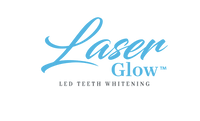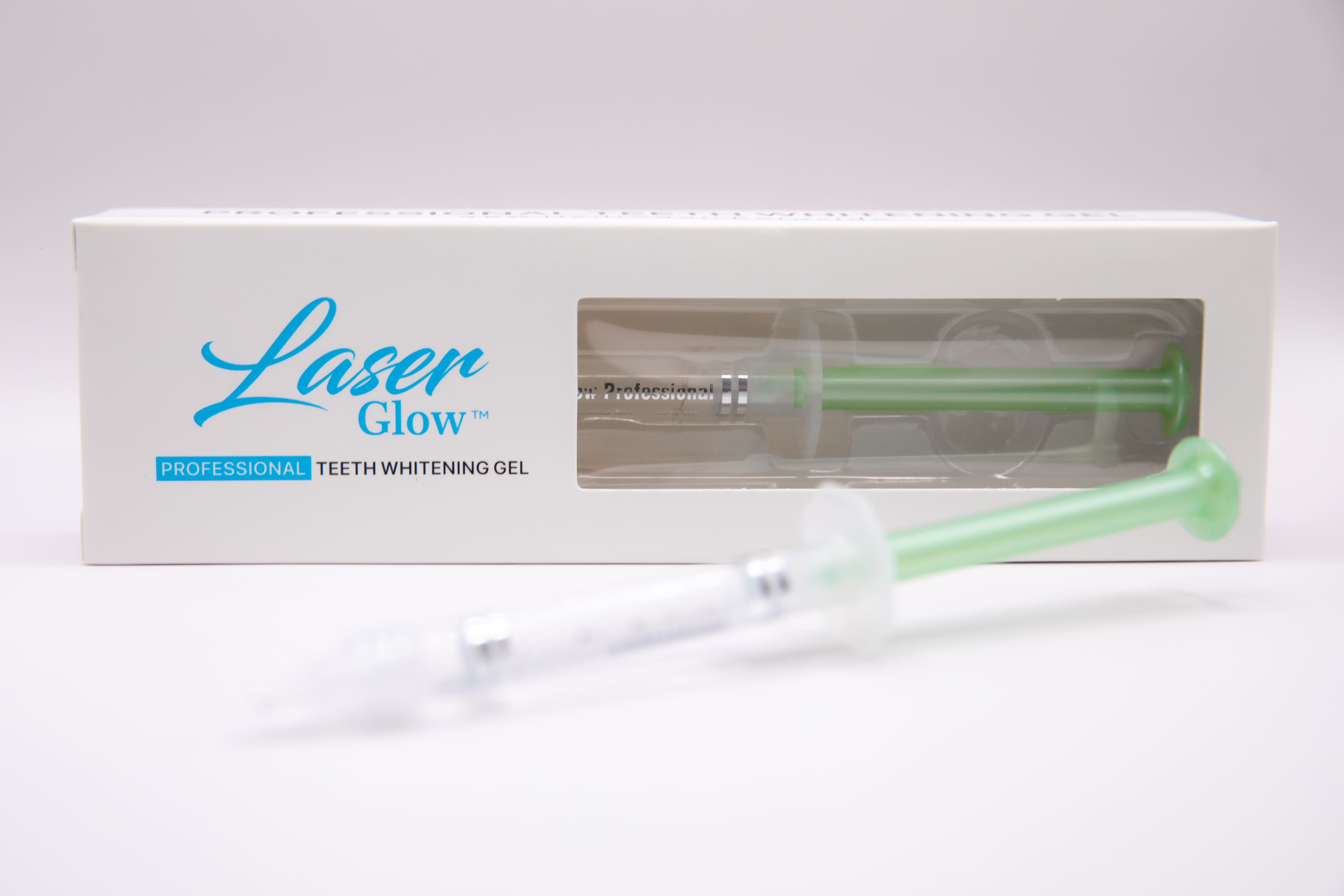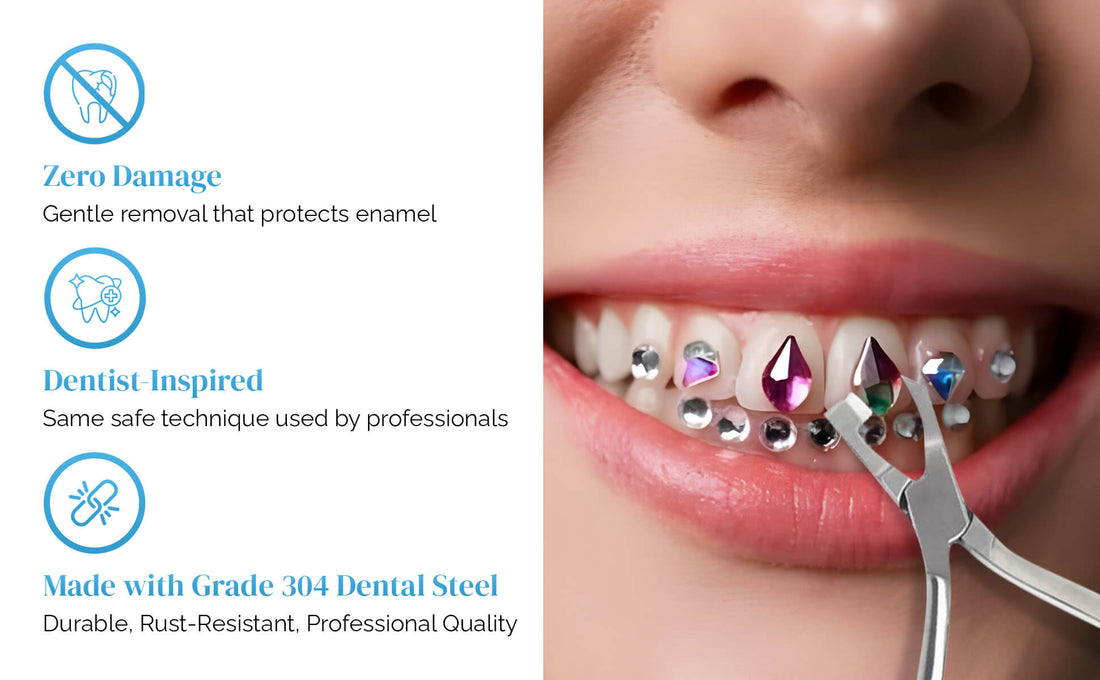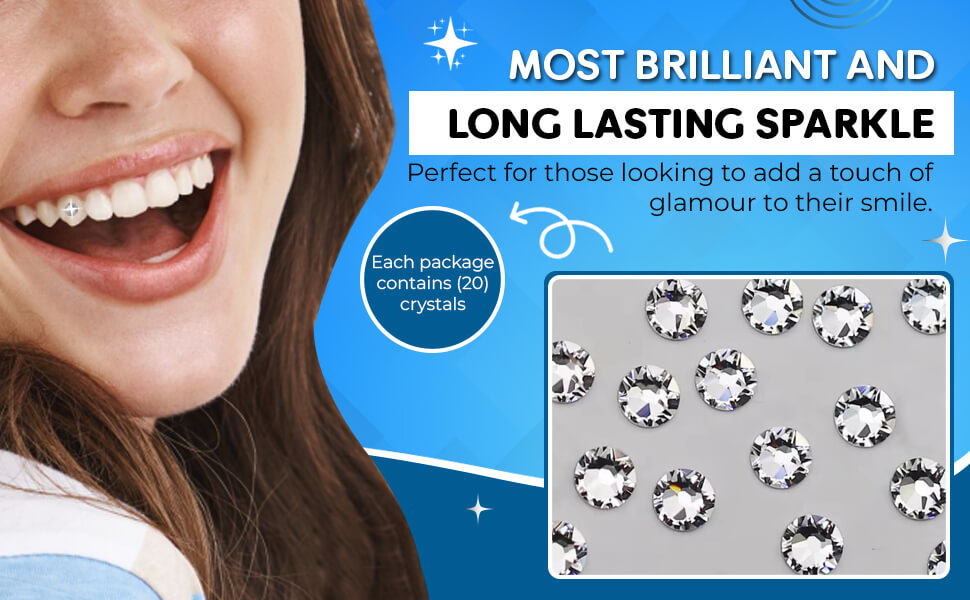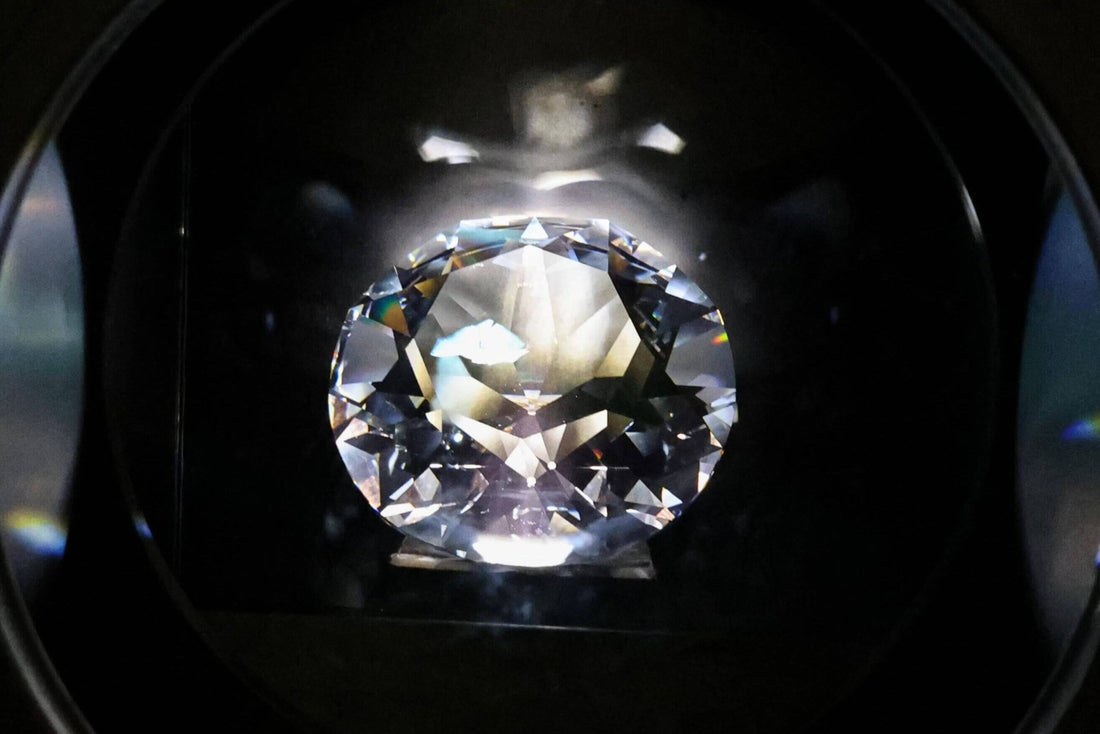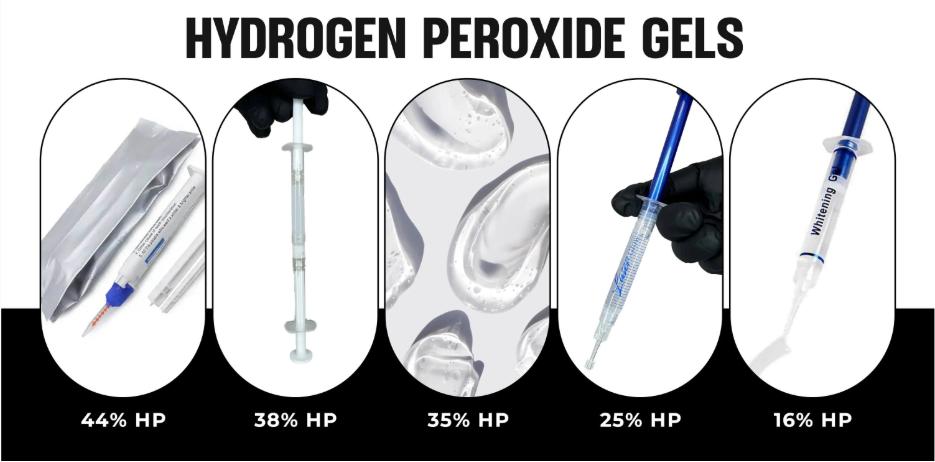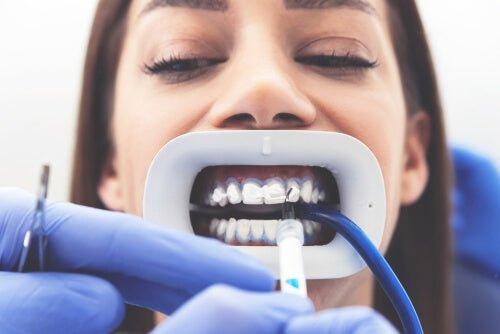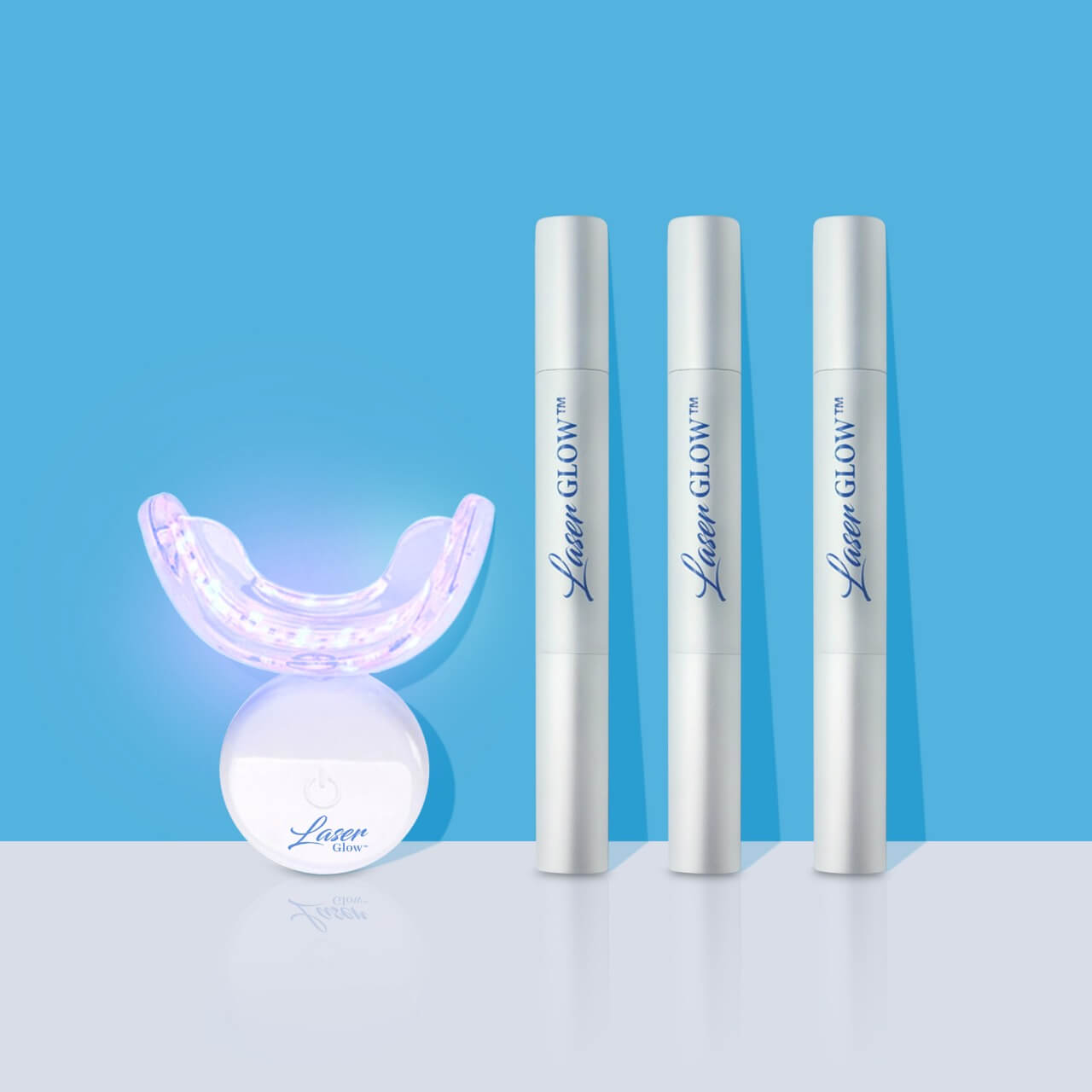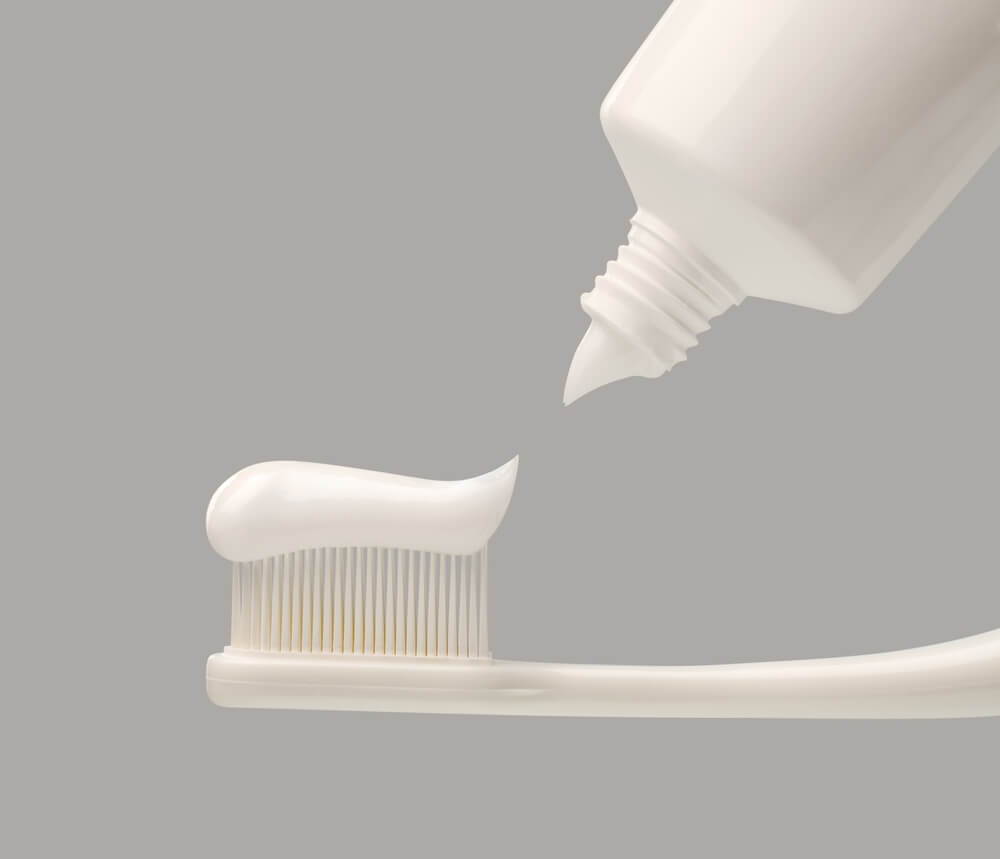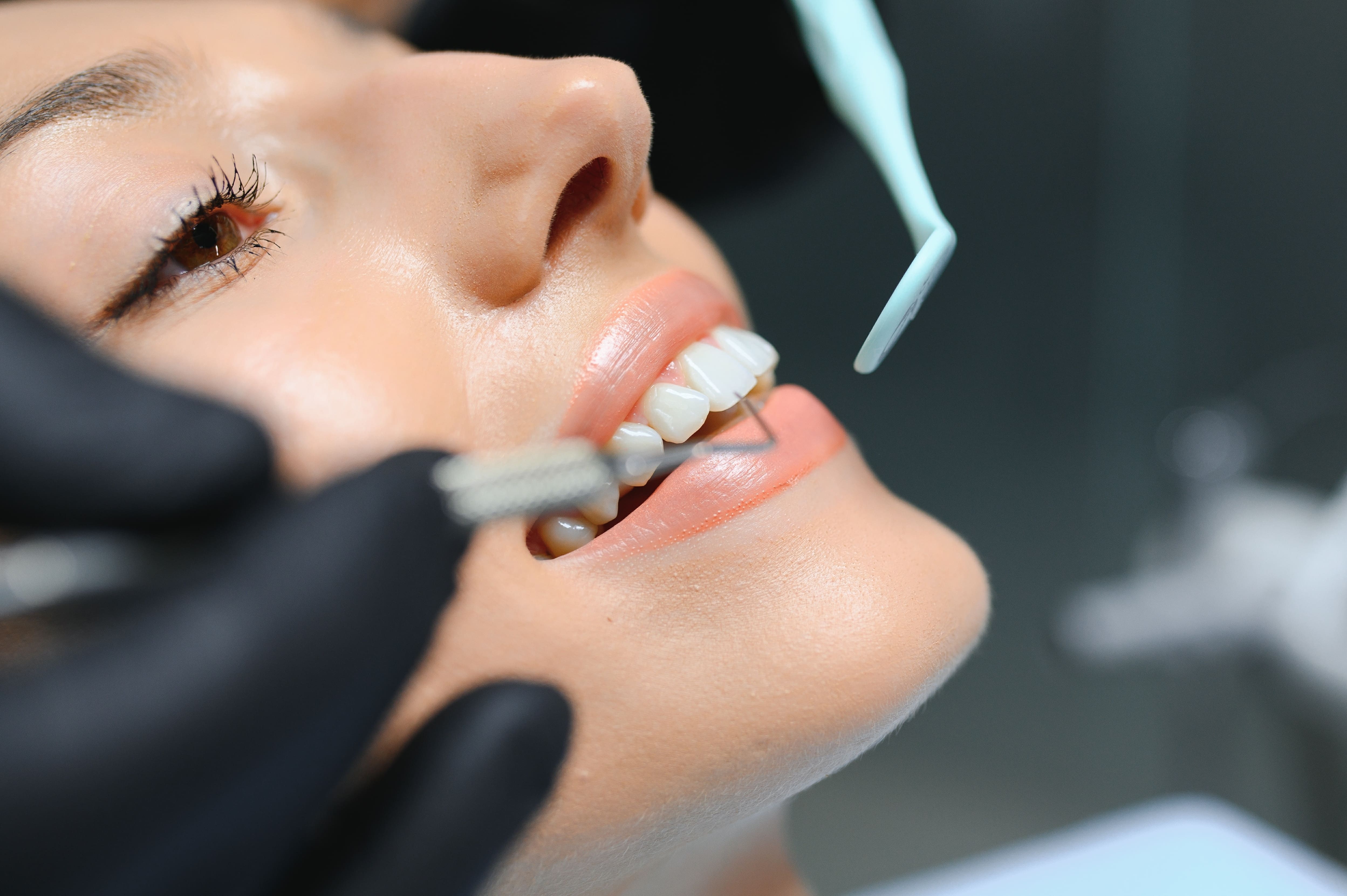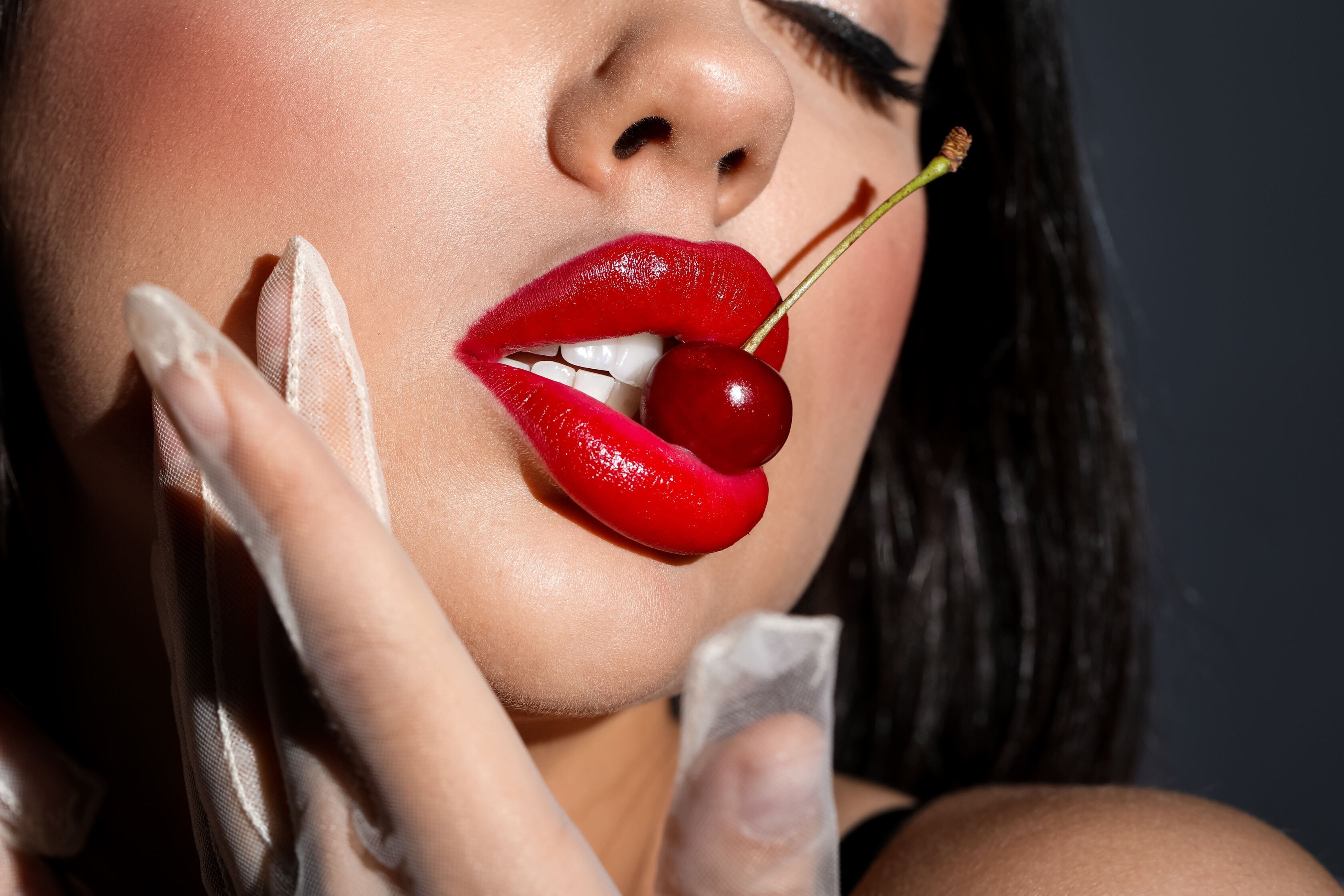Optimizing Your Smile with LaserGlow Professional Teeth Whitening Gel (35% Hydrogen Peroxide): The Complete Guide
When it comes to achieving that brilliantly white smile, few solutions are as effective as 35% hydrogen peroxide teeth whitening gel for professional use. One of the leading products in this domain is the LaserGlow Professional Teeth Whitening Gel (35% Hydrogen Peroxide), renowned for its potent whitening capabilities and consistent results. Whether you’re a dental professional, a beauty spa operator, or someone curious about the science behind professional-grade teeth whitening, understanding how these gels work, the role of gingival barriers, and the function of LED curing lights can help you maximize outcomes safely. In this comprehensive guide, we will delve into the world of professional teeth whitening, exploring everything from the formation of dental stains to how the LaserGlow Professional Teeth Whitening Gel breaks those stains down. We will also explain the protective role of the LaserGlow Gingival Barrier and detail how the LaserGlow LED Curing Light can facilitate the application process. By the end, you will have a deep appreciation for how these products work in synergy to deliver radiant smiles.
1. Understanding Dental Stains and Why They Matter
1.1. How Dental Stains Form
Dental stains are generally divided into two main categories: extrinsic stains and intrinsic stains.
-
Extrinsic stains occur on the outer layer of the tooth, called the enamel. They typically result from foods and beverages like coffee, tea, wine, or certain fruits that contain high levels of chromogens (pigments). Tobacco use is also a common culprit for extrinsic staining. In many cases, these superficial stains respond well to whitening treatments because the hydrogen peroxide teeth whitening gel can penetrate and break down the discolored molecules on or just below the surface.
-
Intrinsic stains are deeper and reside within the dentin layer of the tooth. These stains often arise from factors like certain medications, high fluoride intake during tooth development, or trauma that affects tooth structure. Intrinsic stains can be more challenging to remove, requiring stronger formulations (such as 35% hydrogen peroxide teeth whitening gel for professional use) and multiple sessions to lighten effectively.
1.2. Why Tooth Color Matters
A bright, white smile is often associated with health, vitality, and confidence. It’s no secret that people with whiter teeth feel more comfortable in social interactions. Over time, the quest for a more esthetic smile has driven innovation in professional dental products, leading to highly potent, fast-acting formulas like the LaserGlow Professional Teeth Whitening Gel (35% Hydrogen Peroxide). Not only do these professional products help remove or lighten unwanted stains, but they also enhance self-esteem and can even improve one’s personal and professional relationships.
1.3. The Role of Professional Whitening in Modern Dental Care
Teeth whitening has evolved from a luxury cosmetic procedure to a common practice among dental professionals and spa centers. With countless over-the-counter (OTC) products on the market, many individuals initially try to whiten their teeth on their own. However, professional teeth whitening gel remains the gold standard for safety, efficacy, and dramatic results in a shorter time frame. In-clinic or professionally supervised whitening procedures benefit from high-quality materials, precise protocols, and additional safeguards (like gingival barriers) to protect sensitive oral tissues.
2. The Science Behind Hydrogen Peroxide Teeth Whitening Gel
2.1. What is 35% Hydrogen Peroxide Teeth Whitening Gel?
Hydrogen peroxide is the key active ingredient in many teeth whitening products. In professional settings, a higher concentration of hydrogen peroxide—commonly around 35%—is used for faster and more visible results. The LaserGlow Professional Teeth Whitening Gel (35% Hydrogen Peroxide) is specially formulated for professional applications, ensuring that it delivers a potent whitening effect while minimizing side effects such as sensitivity or gum irritation when used correctly.
2.2. Mechanism of Action
Hydrogen peroxide works by penetrating the porous structure of the tooth. When applied to the enamel and dentin, hydrogen peroxide reacts with the discolored molecules responsible for dental stains. This reaction is essentially an oxidation process, breaking down the larger, pigmented molecules into smaller, colorless ones.
Here’s a simplified breakdown:
-
Application of Gel: The 35% hydrogen peroxide teeth whitening gel for professional use is carefully applied to the tooth’s surface.
-
Oxidative Reaction: Oxygen ions are released from the hydrogen peroxide, which then move into the tooth and disrupt the chemical bonds of the stained molecules.
-
Lightening Effect: As the pigmented molecules break apart, the overall color of the tooth becomes noticeably lighter. This process continues even after the gel is removed, providing residual whitening benefits.
2.3. Benefits of Higher Concentration
One primary advantage of using a 35% hydrogen peroxide teeth whitening gel in a professional setting is the rapid whitening effect. Lower concentration gels found in OTC products can take days or weeks to show results, and they often require repeated use. In contrast, a single professional whitening session with a higher concentration gel can yield dramatic improvements. However, because of the gel’s potency, it should be used under the supervision of a trained professional who can correctly apply and monitor it—making sure to use protective measures like the LaserGlow Gingival Barrier.
3. Breaking Down Stains: A Closer Look at the Oxidation Process
3.1. Oxidation: The Secret to Whiter Teeth
Oxidation is a chemical reaction that involves the loss of electrons. In the context of teeth whitening, the hydrogen peroxide teeth whitening gel releases free radicals (such as nascent oxygen), which oxidize the darker molecules of tooth stains. This oxidation breaks down these molecules into smaller, colorless fragments, thereby diminishing or eliminating the visible stain.
3.2. Speed of the Reaction
A significant advantage of 35% hydrogen peroxide teeth whitening gel for professional use is how quickly oxidation occurs. In many cases, improvements can be seen in under an hour. However, the exact speed depends on:
-
The severity of the stains
-
The type of stains (extrinsic vs. intrinsic)
-
Individual tooth structure and porosity
-
Protocols and complementary equipment, such as gingival barriers and LED curing lights, which help ensure the gel stays in place and does not irritate soft tissues.
3.3. Post-Whitening Considerations
After a professional whitening session, it’s vital to avoid consuming dark or staining foods and beverages (like coffee, red wine, or berries) for at least 24 to 48 hours. This helps maintain the whitening effect. Additionally, some patients may experience mild sensitivity after the procedure, which usually subsides within a day or two. Following your dental professional’s guidelines and using sensitive-friendly toothpaste can help alleviate discomfort.
4. Essential Protective Measures: The Role of the LaserGlow Gingival Barrier
4.1. Why Protect the Gums?
One of the most crucial aspects of professional teeth whitening is the protection of soft tissues, particularly the gums. High concentrations of hydrogen peroxide can irritate or burn gum tissue if they come into direct contact. To prevent this, dental professionals often apply a gingival barrier that shields the gingiva from the gel.
4.2. LaserGlow Gingival Barrier: A Trusted Solution
The LaserGlow Gingival Barrier is specifically engineered to protect the gums and other soft tissues during in-office or professional whitening sessions. This barrier:
-
Quick Application: The barrier material is easy to apply around the gumline. It is typically syringe-dispensed for precision.
-
Forms a Protective Seal: Once cured with a light (more on that soon), the barrier hardens slightly to form a seal. This ensures the hydrogen peroxide teeth whitening gel stays on the intended surfaces.
-
Prevents Irritation: By isolating the gums from the potent whitening gel, the LaserGlow Gingival Barrier reduces the risk of chemical burns or irritation.
-
Easy Removal: After the whitening session, the barrier can be gently peeled off, leaving the gums unharmed.
The quality of a gingival barrier is fundamental to the safety and comfort of a teeth whitening procedure. Choosing a trusted brand like LaserGlow ensures you have a product that is both effective and user-friendly.
5. Curing the Barrier: The Function of the LaserGlow LED Curing Light
5.1. Importance of Light Curing
To lock the gingival barrier in place, a curing light is used to initiate polymerization, transforming the barrier material from a semi-liquid state to a solid protective layer. Proper curing ensures that the barrier remains intact and impermeable, preventing any leakage of the whitening gel onto the gums.
5.2. LaserGlow LED Curing Light
The LaserGlow LED Curing Light is designed for efficiency and reliability. Here’s why it’s an essential part of the professional whitening process:
-
Powerful Output: The intensity of the LED ensures rapid curing of the gingival barrier. This saves time and reduces the overall chair time for patients or clients.
-
Ergonomic Design: A well-designed LED curing light is comfortable to hold and maneuver, enabling precise application of light on the gingival barrier.
-
Consistency: High-quality LED curing lights provide a consistent wavelength of light, guaranteeing uniform curing across the entire barrier.
-
Long Service Life: Many LED curing lights offer extended operating life, ensuring that professionals can rely on them for multiple procedures without frequent maintenance or bulb replacements.
5.3. Additional Uses
While primarily used to cure gingival barriers during whitening sessions, LED curing lights can have multiple functions in the dental environment, such as curing dental adhesives and other light-activated materials. Their versatility makes them a worthwhile investment for any professional setting that provides whitening or restorative dental procedures.
6. Step-by-Step Guide to a Professional Whitening Session Using LaserGlow Products
6.1. Preliminary Evaluation
Before any whitening procedure, a qualified professional should conduct a thorough evaluation. This typically involves:
-
Medical and Dental History: Identifying any contraindications, such as pregnancy or specific dental restorations that might not whiten evenly.
-
Oral Examination: Assessing the condition of teeth and gums, looking for signs of decay, gum disease, or other issues that might complicate the procedure.
-
Shade Assessment: Documenting the initial shade of the patient’s teeth to measure progress.
6.2. Preparation
-
Cleaning the Teeth: A brief cleaning or polishing session ensures that plaque and debris do not interfere with the hydrogen peroxide teeth whitening gel.
-
Isolation: The lips and cheeks are retracted to expose the teeth. Eye protection is typically provided to the patient.
-
Applying the LaserGlow Gingival Barrier: Using a syringe, the barrier is applied around the gumline. Care is taken to cover all areas that might come into contact with the whitening gel.
6.3. Light Curing the Barrier
-
Once the barrier is in place, the LaserGlow LED Curing Light is used to activate the material.
-
The curing process usually takes a few seconds to a minute, depending on the barrier product’s instructions.
-
After curing, the barrier should be rigid and firmly adhered to the gums, forming a sealed border around the teeth.
6.4. Application of the 35% Hydrogen Peroxide Teeth Whitening Gel
-
The LaserGlow Professional Teeth Whitening Gel (35% Hydrogen Peroxide) is carefully applied to the exposed tooth surfaces.
-
The gel is left on for a specified time, which can vary depending on the manufacturer’s guidelines and the desired level of whitening. Common application times range from 15 to 30 minutes per cycle, and multiple cycles may be performed in a single session.
6.5. Monitoring and Removal
-
Throughout the procedure, the dental professional monitors the patient’s comfort and checks for any leakage or gum irritation.
-
Once the application time is complete, the whitening gel is suctioned or rinsed off. If multiple applications are needed, fresh gel is reapplied.
-
Finally, the gingival barrier is removed, and the teeth are rinsed.
6.6. Post-Treatment Care
-
The patient is advised to avoid staining foods and beverages and to maintain good oral hygiene practices.
-
Dentists or spa professionals might recommend fluoride treatments or sensitivity toothpaste to mitigate potential tooth sensitivity.
7. Why Choose LaserGlow Professional Teeth Whitening Gel (35% Hydrogen Peroxide)?
7.1. Superior Formulation
LaserGlow has invested in research and development to create a hydrogen peroxide teeth whitening gel that’s both powerful and gentle. The high concentration of 35% hydrogen peroxide ensures effective whitening, while the unique stabilizers and ingredients within the gel help reduce post-whitening sensitivity and discomfort.
7.2. Consistent, Predictable Results
Professionals across dental offices and aesthetics practices have noted the consistency of LaserGlow’s whitening outcomes. Given proper technique and patient compliance, the LaserGlow Professional Teeth Whitening Gel reliably lightens teeth by several shades in a single session. This predictability is a key factor that separates top-tier professional products from lesser-known alternatives.
7.3. Trust and Reputation
A product line’s reputation in the professional community speaks volumes. LaserGlow has gained recognition for its dedication to innovation, user-friendly design, and proven results, making it a go-to choice for practitioners looking to provide a premium whitening experience.
8. The Importance of Interlinking Your Whitening Workflow
When offering professional whitening services, it’s not just about using a 35% hydrogen peroxide teeth whitening gel for professional use. The entire workflow—from gum protection to post-care recommendations—must be optimized for safety and efficiency. That’s why it’s crucial to use complementary products like the LaserGlow Gingival Barrier and the LaserGlow LED Curing Light. By integrating these products, you create a seamless process that enhances patient comfort, protects soft tissues, and delivers impressive results.
9. Common Concerns and FAQs About Professional Teeth Whitening
9.1. Is Professional Whitening Safe?
Yes, professional whitening is generally safe when performed by a qualified practitioner who uses protective measures like a gingival barrier. The LaserGlow Professional Teeth Whitening Gel (35% Hydrogen Peroxide) has been formulated specifically for professional use, meaning safety guidelines and application protocols are paramount.
9.2. Will Whitening Damage My Tooth Enamel?
Research shows that properly formulated and professionally administered whitening gels do not damage healthy tooth enamel. The hydrogen peroxide teeth whitening gel dissolves stains but does not alter the basic structure of your teeth. However, it’s crucial to follow recommended guidelines and avoid overuse.
9.3. How Long Do the Results Last?
Results can vary depending on lifestyle habits, oral hygiene, and dietary choices. On average, professional whitening results can last from several months to over a year. Touch-up sessions or take-home trays (provided by your dental professional) can help maintain your new shade for longer.
9.4. Can I Whiten My Teeth If I Have Restorations?
Teeth whitening gels typically only affect natural tooth surfaces. If you have restorations such as crowns, veneers, or composite fillings in visible areas, you may need to replace them after your whitening procedure to ensure color uniformity.
9.5. How Many Shades Whiter Can I Expect?
Patients can often see improvements of up to 6–8 shades, though this depends on the initial degree and type of staining. The LaserGlow Professional Teeth Whitening Gel can achieve dramatic outcomes, especially when combined with proper protocols and equipment.
10. The Role of Aftercare in Sustaining Whiter Teeth
10.1. Avoiding Staining Agents
For the first 24–48 hours post-whitening, teeth can be more susceptible to re-staining. Patients should avoid:
-
Dark drinks like coffee, tea, red wine, and cola
-
Foods with strong pigments, such as berries, beets, and curries
-
Tobacco products
10.2. Maintaining Oral Hygiene
Daily brushing, flossing, and routine dental cleanings will help keep teeth free from plaque buildup, which can trap stains. Using a toothpaste designed for sensitive teeth can reduce any lingering sensitivity and help maintain your new, brighter smile.
10.3. Touch-Up Treatments
Depending on the individual and their lifestyle, periodic touch-up treatments might be recommended. This could involve short in-office sessions, or professional-grade whitening trays for use at home. The key is to follow the dentist or professional’s instructions meticulously to avoid complications.
11. Industry Trends and Innovations in Teeth Whitening
11.1. Continued Research into Peroxides
While hydrogen peroxide remains the most common active ingredient, ongoing research explores other peroxides (like carbamide peroxide) and even non-peroxide alternatives for special cases. However, high-concentration hydrogen peroxide teeth whitening gel remains the industry standard for maximum efficacy.
11.2. Advanced Delivery Methods
From LED curing lights to specialized whitening lamps, new technologies aim to speed up the oxidation process. Some modern systems incorporate heat or laser energy to enhance the gel’s penetration, although not all systems are created equal. Professionals often rely on well-validated products like LaserGlow’s line for consistent performance and safety.
11.3. Personalized Approaches
The future of teeth whitening includes more personalized treatment plans, taking into account each individual’s unique needs, tooth sensitivity, and type of staining. This personalized approach might involve combination treatments or targeted whitening for specific teeth.
13. How LaserGlow Stands Out in a Competitive Market
13.1. Research-Driven Formulations
LaserGlow invests heavily in research, ensuring that each product, from the LaserGlow Professional Teeth Whitening Gel (35% Hydrogen Peroxide) to the LaserGlow Gingival Barrier and LaserGlow LED Curing Light, meets the highest industry standards. This research focus yields products that are both safe and consistently effective.
13.2. Comprehensive Product Range
LaserGlow offers a complete suite of whitening solutions, from the gel to the barrier and curing light. This one-stop-shop approach simplifies the buying process for professionals, ensuring all components are compatible and work synergistically for optimal results.
13.3. Training and Support
The company often provides educational materials, how-to guides, and customer support to help professionals achieve the best outcomes. This commitment to client support further separates LaserGlow from other brands that simply sell a product without post-purchase assistance.
14. Moving Forward: Choosing the Right Professional Whitening Solution
Choosing the right whitening system can significantly impact patient satisfaction, repeat business, and your overall reputation in the teeth whitening market. LaserGlow offers a uniquely designed, high-quality product line that covers each step of the whitening process:
-
35% Hydrogen Peroxide Teeth Whitening Gel for Professional Use: Delivers quick, dramatic results.
-
LaserGlow Gingival Barrier: Protects the gums effectively, ensuring a painless and irritation-free experience.
-
LaserGlow LED Curing Light: Rapidly cures the barrier, expediting the procedure and maintaining precision.
By combining these tools, professionals can provide a top-tier experience that produces noticeable, lasting results for their clients.
15. Conclusion: Embrace the Power of Professional Teeth Whitening
Teeth whitening, once seen as a luxurious procedure reserved for celebrities, has become an essential service in modern dental and aesthetic practices. High-strength products like the LaserGlow Professional Teeth Whitening Gel (35% Hydrogen Peroxide) are at the forefront of this trend, offering superior whitening power. However, the effectiveness of any whitening procedure hinges on using the right tools and adhering to proper protocols.
A gingival barrier is indispensable for protecting soft tissues, and the LaserGlow Gingival Barrier ensures comfort and safety. Meanwhile, the LaserGlow LED Curing Light is vital for securing the barrier in place and can be used for other light-curing procedures as well. These products work in harmony, delivering a comprehensive solution that addresses every stage of the whitening journey—from initial application to post-session removal.
For professionals, offering teeth whitening with LaserGlow products not only enhances patient satisfaction but also elevates your practice’s credibility and profitability. For individuals exploring whitening options, choosing a professional service that employs high-quality 35% hydrogen peroxide teeth whitening gel for professional use and invests in gum protection with a gingival barrier can make the difference between a mediocre experience and a stunningly bright smile.
If you’re ready to transform smiles and boost confidence, consider integrating LaserGlow Professional Teeth Whitening Gel, the LaserGlow Gingival Barrier, and the LaserGlow LED Curing Light into your practice. Your clients will thank you—both for the safe, efficient procedure and the radiant results that follow.
Quick Recap
-
Stains and Oxidation: Dental stains form due to colored molecules embedding in the tooth structure. Hydrogen peroxide teeth whitening gel breaks down these molecules through oxidation, resulting in lighter teeth.
-
High-Concentration Gels: A 35% hydrogen peroxide teeth whitening gel for professional use offers faster, more dramatic results than OTC alternatives, but requires professional supervision and protective measures.
-
Gingival Barrier: The LaserGlow Gingival Barrier protects the gums from irritation, ensuring a comfortable whitening experience.
-
LED Curing Light: The LaserGlow LED Curing Light cures the barrier material quickly, creating a solid shield. It also has broader uses in dental or beauty spa settings.
-
Post-Whitening Care: Avoid staining foods/drinks for 24–48 hours and maintain a robust oral hygiene routine. Sensitivity, if any, typically subsides within days.
By following the best practices outlined in this guide and leveraging the full suite of LaserGlow’s professional whitening products, you can deliver outstanding results that leave clients raving about their new, revitalized smiles. Embrace the science and safety of hydrogen peroxide teeth whitening gel—and watch your practice grow as you help more people unlock the confidence that comes with a brilliant, healthy-looking smile.

